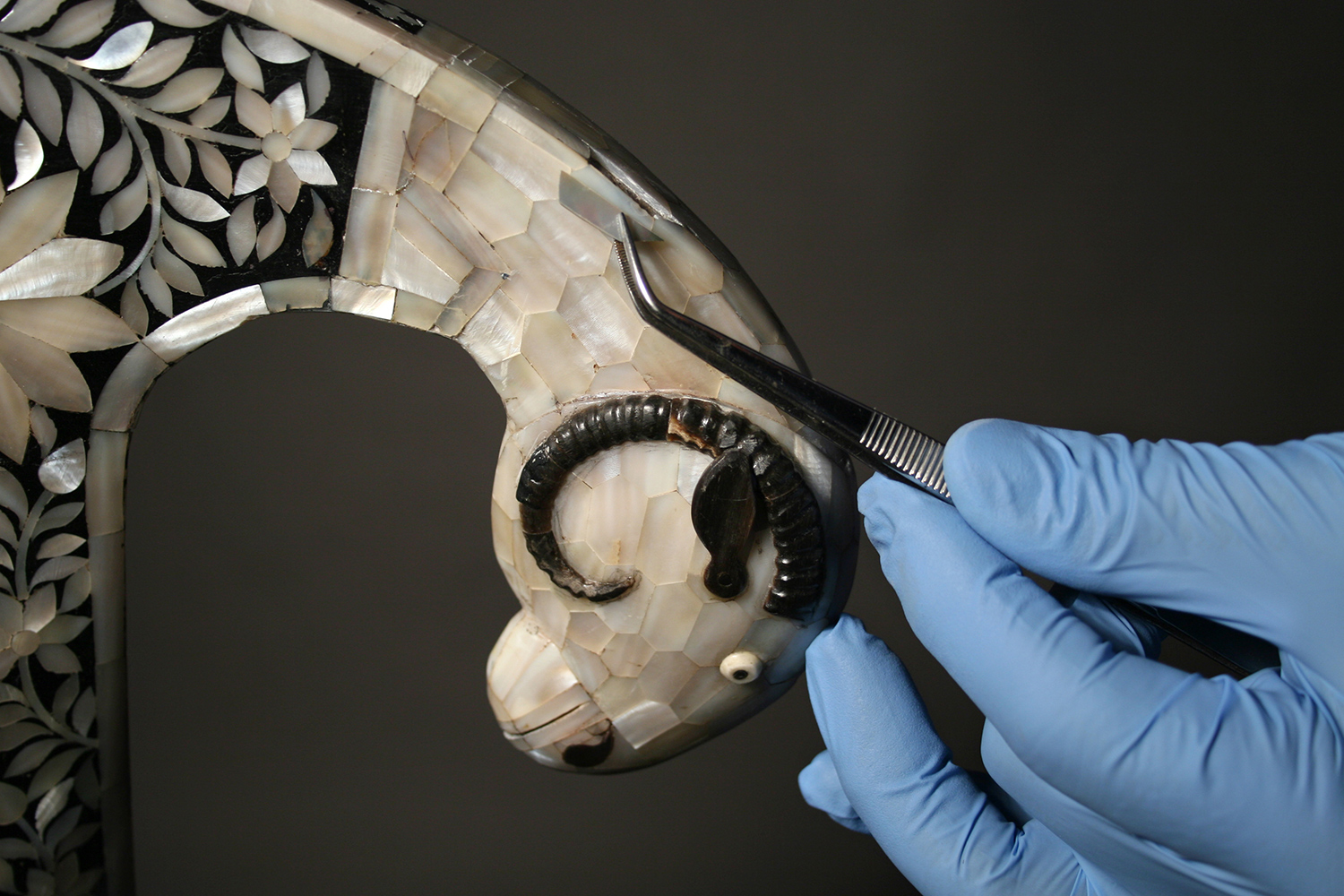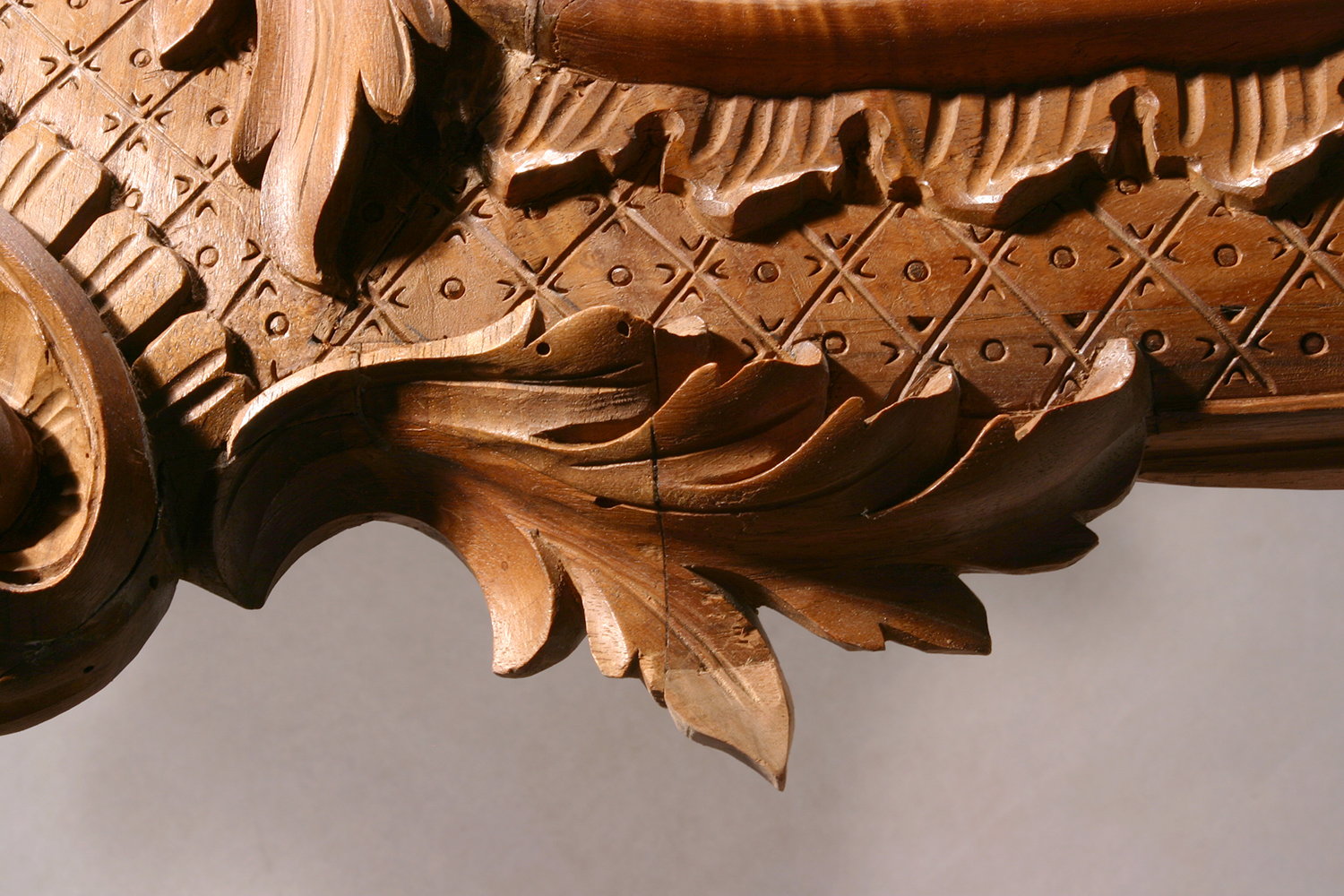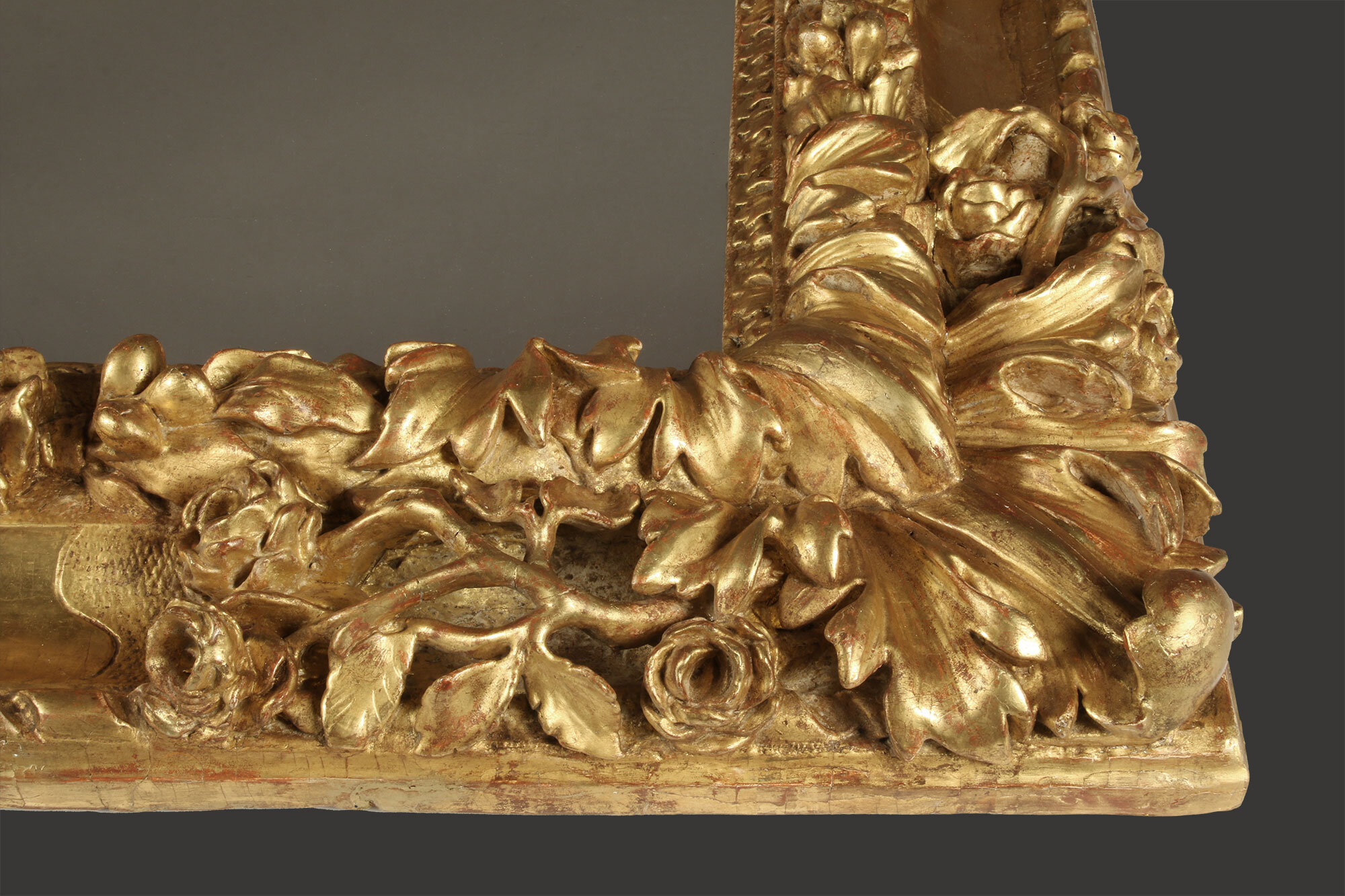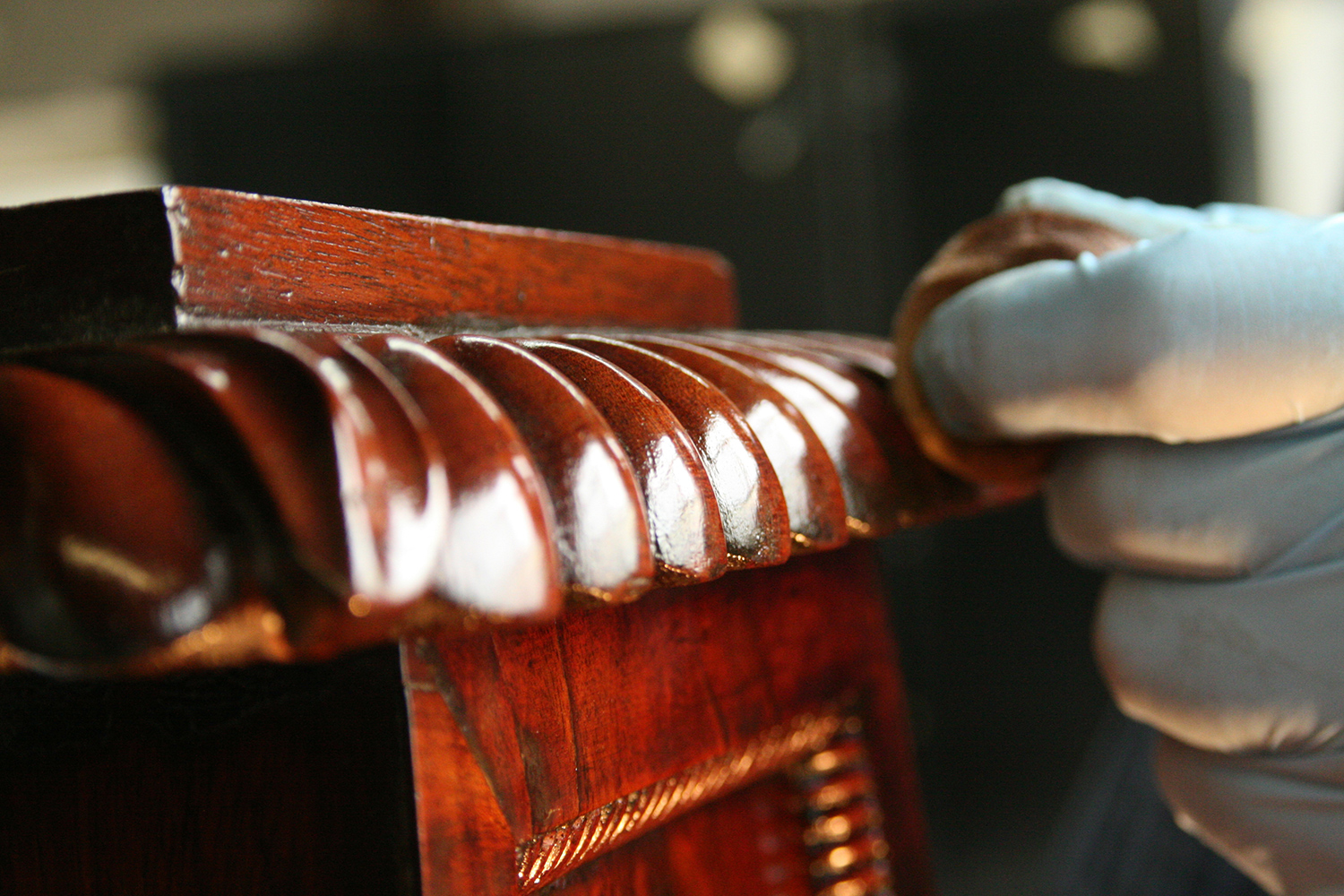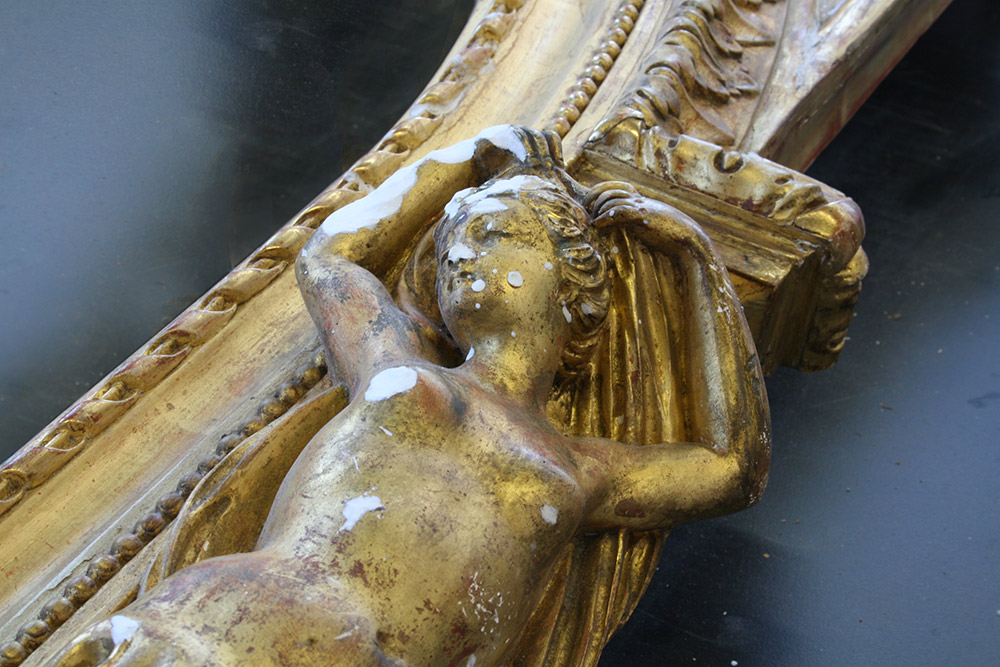From Historic Pullman to the UIC Campus:
Re-purposing Memorable Stained Glass Windows
Bernacki & Associates, Inc. was privileged to fabricate display frames for beautiful historic stained glass windows and install the windows in the John Paul II Chapel at the Newman Center at 700 S. Morgan St., the spiritual home of students and faculty of the University of Illinois at Chicago. The interior of the chapel with newly installed stained glass can be viewed directly on the Newman Center’s website, www.jp2newman.org.
The original windows came from the Holy Rosary Church in the Chicago’s historic Roseland area. According to the Archdiocese of Chicago Archives & Records, the beginnings of the parish date back to the times of the Pullman Car Company which manufactured railroad cars in the mid-to-late 19th century through the first half of the 20th century, during the industrial explosion of railroads in the United States.
More…
Ludwig Mies van der Rohe Architectural Interior
Historic Preservation of the GSA Chicago Loop Post Office Walnut Paneling
West wall panel wall viewed after treatment. Water staining and dirt are removed, the panels are refinished, the unoriginal rail is eliminated in this location as the Post Office carts do not enter this area and there is no risk of abrasion caused by equipment. The previous rail was installed directly on the veneered panels, which created additional damage to veneer and deep hols in the substrate. This damage was addressed by infilling and matching to the surrounding area as much as possible. New elegant steel guards protect corner trims from damage. | Photo courtesy of GSA
… The Post Office is part of the Chicago Federal Center designed by Ludwig Mies van der Rohe. The building was completed in 1973. It is a single-story building that rises 27 feet above grade with two levels below ground. The structural system is arranged on a grid of 28 square feet with a vertical floor to ceiling height of 24 feet. The exterior flat black graphite painted steel structure with floor to ceiling windows allows the outside in, with views of the surrounding plaza. The granite pavement on the exterior, continues through to the interior, furthering the open effect of the design. The postal operations and services are enclosed within a series of walnut veneered panels while the public lobby extends around the perimeter of the building. The walnut veneered panels create a warm, traditional contrast with the juxtaposition of the sleek glass, granite and steel exterior…
MORE…
“Patty Diffusa” Chair
“Patty Diffusa” armchair, designed by William Sawaya, circa 1993 for Sawaya & Moroni, Italy
Features: Mahogany solid wood, mahogany veneer, bent/molded plywood, green leather upholstered seat
The “Patty Diffusa” chair is known for its sculptural three-dimensional curvature in molded plywood. The wide curved armrests extend to legs toward the front and create loops toward the back and downwards to smoothly disappear under the seat. The chair’s back rest is made of molded plywood as well. The material is manufactured from thin layers of wood veneer or "plies" that are glued together through heat and pressure…
More…
The Conservation of Chinese Rosewood Mother-of-Pearl Inlay Console Table
This elegant rosewood table with mother-of-pearl inlay exemplifies traditional Chinese design. For centuries, solid rosewood furniture has been treasured both in exquisite homes in China and around the world for its distinct aesthetic style and durability.
The properties of Hongmu Rosewood (meaning red wood in Chinese), are similar to those of ebony and other finest hardwoods. The wood is finely grained and denser than water, (it would not float but sink in water), and it is high in oils and resins. These properties of material make furniture structurally stable, hard wearing, and fairly resistant to warping or cracking in tropical conditions due to expansion and contraction. The density and strength of rosewood allow oriental furniture to be built without the use of glue and nails, but rather being constructed using joinery and doweling alone…
More…
Case Study: Addressing Transport Damage
19th Century Gilt Framed Mirror
Monumental 19th century French water gilt mirror with arched beveled plate features an ornamental female face at top central crest medallion flanked on both sides by laurel leaf and berry branches. The upper edge of the frame is adorned with various guilloche, beading, floral and foliage ornamentation. Two human figures sculpted in gesso beautifully flank the mirror on the sides.
Overall Dimensions: 42.5”W x 4.5”D x 67”H
Mirror Slot: 36.5”W x 57”H
Condition & Treatment
The gilded frame sustained severe impact damage in transport resulting in disfiguring losses to the elaborate ornamentation. The original beveled mirror was completely shattered and at the time of inspection and the pieces of glass were retained with no glass remnants within the frame. There were detached pieces of gilded ornamentation mixed in with the shattered glass…
More…
Looking Beyond the Portrait:
The Art of Gilded Frames
Bernacki & Associates Lecture at Chicago’s Driehaus Museum
Introduction to historical ornamentation and frame styles, and their relationship to the artistic influences of their respective time periods
Gilt floral cartouche - rich detail of an ornamental 19th century giltwood frame
Not all frames are created equal. Join Bernacki & Associates for an investigation of the extraordinary craftsmanship and specialized techniques of hand carved and gilded frames. Learn the precious artistic merit of frames themselves and their crucial complementary relationship to artwork.
Using antique frame examples, enjoy a live demonstration of the gilding craft and process and learn how to identify authentic gold leaf versus metal leaf, and other applications used for a variety of finishes. Learn how to properly care and maintain your own precious frames to ensure that they can be appreciated well into the future.
Bernacki & Associates Inc. is one of Chicago’s most respected conservation and restoration firms specializing in period and contemporary fine furniture, objects, historic millwork and architectural elements. Established 30 years ago, Bernacki & Associates has become renowned both locally and nationwide as a comprehensive conservation and restoration resource. Clients include museums, antique and art dealers, private collectors, designers, insurance claims specialists, and discerning art-owners.
Chicago business marks 30th anniversary of building heirlooms, restoring antique furniture
Antique Trader | July 9, 2018
CHICAGO – The City of Chicago is home to many specialty businesses, but few businesses are as specialized as Bernacki & Associates, Inc. Founded by owner Stan Bernacki on July 4, 1988, the company’s focus is squarely centered upon the restoration and conservation offine antique furniture, upholstery, artwork, clocks, artifacts, sculpture, frames, family heirlooms, and historic millwork.
Serving a Varied Clientele
Bernacki and his team of specialists also design and build custom furniture and interiors. His variety of clients include museums, antique and art dealers, interior designers, architects, insurance claims specialists and private collectors. From its humble beginnings in a garage near the corners of Ogden and Grand Avenues, Bernacki & Associates quickly flourished and just four years later relocated operations to a larger and more modern facility at 424 North Oakley Boulevard in Chicago. Over 20,000 square feet of modern space comfortably accommodates ample workspace for his skilled artisans, conservators, gilders, upholsterers, framers, and wood carvers.
Conserving Form and Function
The Treatment of Mother of Pearle Inlaid Antique Klismos Chairs
There are times when antiques require the attention of conservators. An interior designer or architect are often asked for a resource of whom they would feel best qualified for a particular piece.
The striking set of antique klismos chairs were part of a collection belonging to a client of Denise Antonucci, ASID, of ASI Interiors. She contacted Bernacki & Associates to care for the chairs. The chairs were not only beautiful to look at, but were also regularly used in her client’s home.
Mother-of-pearl is a beautiful naturally forming material that has been used as a decorative inlay for centuries. More properly known as nacre, it is a calcium and protein composite substance that is only produced by certain mollusks as an inner shell layer and is the outer layer of pearls. It is very strong and resilient due to its structure which consists of overlapping sheets of brittle aragonite separated by more elastic biopolymers. The thickness of the aragonite leads to the beautiful iridescence and structural colors that seem to change and flow as your viewing angle shifts. It has been used in the design of jewelry, decorative objects such as furniture and musical instruments, and architecture. In furniture, mother-of-pearl has mostly been applied in graceful, distinctive inlays to contrast with surrounding wood or other surrounding surfaces or as a complete overlay to add beauty to a less distinctive substrate.
More...
Meet the Experts: Art Rescue 911
Thursday, April 26, 2018 | 6:30 - 8 p.m.
The Richard H. Driehaus Museum
40 East Erie Street | Chicago, Illinois 60611
Bernacki & Associates is one of Chicago’s premier conservation & restoration firms specializing in “saving” period furniture, objects, historic millwork and architectural elements. This event, featuring founder Stan Bernacki, will include live demonstrations of the work the group is known for as well as an account of some of their favorite “cases.”
The Conservation of Historic Irish Harps
By Barton Bjorneberg, Conservator, Bernacki & Associates, Inc.
...This article is going to center on the question of conservation of musical instruments, specifically harps. The primary purpose of creating a musical instrument is to fabricate a tool that will be used to make the art of music. The initial importance and quality of the instrument is primarily determined by the quality of the sounds it can create and the ease with which it can make those sounds. Instruments are made of differing types and qualities of materials and craftsmanship. The quality of the sound does not necessarily have anything to do with the quality of manufacture or the beauty of its visual appearance. Anyone who has been involved in the creating of musical instruments has had the experience of a beautifully crafted and exquisitely detailed instrument that always sounds dead and lifeless. This is often contrasted by an instrument whose finish turned out horribly, the joinery does not match accurately, and the figuring of the wood is dull, but when put in the hands of a true musician comes alive and makes sounds that are so beautiful, they make people cry.
But what happens when an old instrument can no longer make the sounds it was created to make due to failure of structural material? When the only way to return that instrument to working condition is to replace large sections of original material? When does that mass of metal and wood move from a sound making machine to a sculptural and historic artifact? Harps are extreme examples of the question and it affects how rare completely original harps are and how important those few then become....
More...
Historical Resonance: Playing an Antique Egan Harp
By Nancy Hurrell, Harp Consultant, Museum of Fine Arts, Boston
The highly decorative Portable Irish Harp, with delicate strands of gilt shamrocks and ornate swirling acanthus on a colored ground, is collected as an art object and examples are displayed in museums worldwide - but what does it sound like? Produced in the early 1800s by Ireland’s leading harp maker John Egan (fl.1803-1829), the harps were touted in newspaper adverts as having ‘great brilliancy’ and ‘sweetness of tone’. The instruments gained widespread notoriety for their splendid appearance and sound, and Egan harps graced the music rooms of the great houses of Ireland and were also played by members of the Royal Family in England. In 1821 John Egan was bestowed the prestigious Royal Warrant by the King along with the title of ‘Harp Maker to George IV and the Royal Family’, and the Royal Crest is etched on the brass plates of harps produced after this date. A century later, several harp makers imitated Egan’s Irish harp model, and it became the prototype for today’s popular Celtic harp. By the early 1900s, most extant Egan Irish harps were no longer playable, but were sold and collected as rare artifacts.
As antiques, Egan Portable Irish Harps are valued for their attractive sculptural qualities, handsome neo-classical decoration and Irish symbolism, and examples are preserved in several major museum collections around the world: Metropolitan (New York), MFA (Boston), National Museum of Ireland (Dublin), V&A and Horniman (London), Musikmuseet (Sweden), as well as significant instrument collections in France, Italy and Belgium and also Japan. Typically Egan harps in museums are cosmetically strung, having the appearance of being playable, but in fact the strings are kept slack. Although wood gives the instrument its characteristic sound, the constant stress of string tension on wood over time tends to pull up the thin soundboard, and the neck twists, bringing the harp’s playing days to an end. Real horror stories are known in which fragile antique harps simply collapsed as the strings were brought up to tension. Still, with modern techniques of historical restoration, it is now possible for a few Egan harps to be made playable again.

